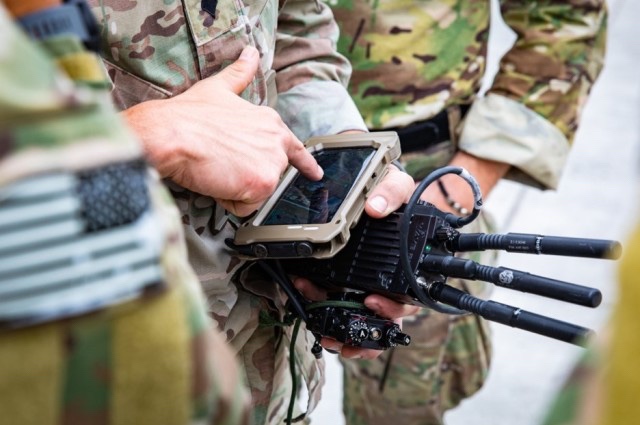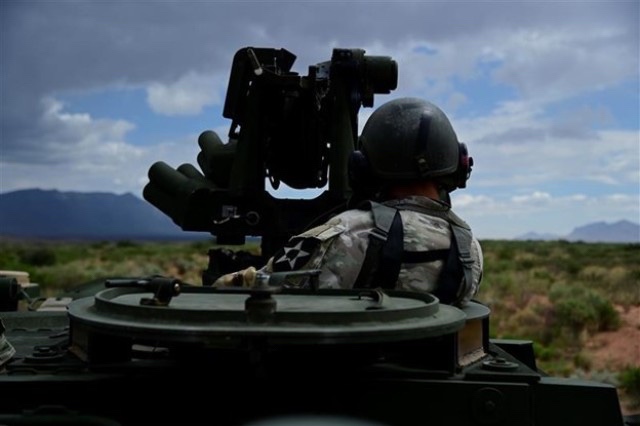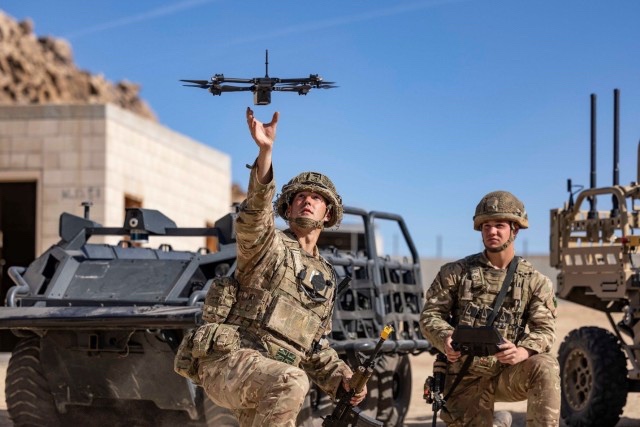
AUSTIN, Texas — For the U.S. Army to reach its transformation goals, it must ensure the innovations being tested and adopted in support of future readiness are also being seamlessly integrated across the force — a focus area for the Army’s newest four-star command.
“Army Futures Command has taken the approach that we will lead the integration for the United States Army, and the land component specifically, into all the domains that we’re dependent on — air, land, sea, space, cyberspace, etc., a truly multi-domain approach, while at the same time looking at concepts for the future — with all those key partners that we need to work with,” said Army Futures Command Deputy Commanding General Lt. Gen. Thomas H. Todd III.
The command’s strategic integration of transformation activities — from initial concepts and requirements onward — ensures the Army is achieving effective, sustainable and far-reaching improvements to how the force operates both on and off future battlefields.
AFC is undertaking its integration work in myriad ways, including building new systems compatible with those of multinational partners, incorporating support mechanisms for modern technologies into training modules and long-term sustainment plans, and sharing critical lessons learned from groundbreaking science and technology research across all relevant components of the Army and joint force. The command executes integration activities in conjunction with its five other core functions: future operational environment, concepts, research, experimentation and requirements; these six functions support the command’s ability to prioritize people, design the Army of 2040 and deliver the Army of 2030.
AFC’s Directorate of Integration is responsible for synchronizing integration across doctrine, organization, training, materiel, leadership, personnel, facilities and policy, while numerous downtrace organizations — including cross-functional teams, or CFTs — are engaging in integration-furthering activities daily. These efforts reinforce one another, enabling the U.S. military and its allies to more clearly see where strengths and weaknesses exist, and remedy any potential problems.

“The Army strategy requires a keen focus on integration, allowing us to hone in on necessary resiliency and situational awareness of the battlespace,” said Mike Monteleone, director of the Assured Positioning, Navigation and Timing/Space (APNT/Space) CFT.
“Resiliency and situational awareness build confidence. Confidence builds speed. Speed builds force lethality. To achieve that end result, the Army must focus on integration at all levels,” Monteleone continued.
The APNT/Space CFT was able to increase as well as observe stakeholder integration during its most recent Positioning, Navigation and Timing Assessment Experiment, known as PNTAX, held at White Sands Missile Range, New Mexico, from August to September 2022.
PNTAX, which brings together hundreds of military and industry participants annually, is the Army’s premier live-sky, open-air GPS and communications denied/degraded experiment, offering tactical scenarios informed by pacing threats. The experiment incorporates new and existing PNT and navigation warfare technologies, which Army and joint force participants can assess, develop and reassess in the most challenging and realistic environments available.
The Assured Positioning, Navigation and Timing/Space Cross-Functional team is a crucial part of the Army Futures Command, responsible for accelerating the delivery of advanced APNT, Tactical Space and Navigation Warfare capabilities to the Soldier. One way the CFT informs technology and system requirements, is through the PNT Assessment Experiment, or PNTAX.
PNTAX provides an opportunity for early, immersive experimentation, where the Army and its partners across government, industry and academia put technology of varying readiness levels directly into Soldiers’ hands. These early opportunities for direct end-user feedback are crucial and heavily influence the rest of the technology development process to meet capability requirements and ultimately integrate faster.
Other examples of how AFC is integrating new solutions are evident in the international partnership-building work being carried out by the Network and Long Range Precision Fires (LRPF) CFTs.
The Network CFT acknowledges that as national armies operate in multinational coalitions during future expeditionary operations, integration and interoperability of communications will be paramount to ensuring battlefield success. As a result, the CFT hosts foreign liaison officers from the armies of two close allies, the U.K. and Australia, to help shepherd information interoperability initiatives, concepts and goals.

Both the U.K. and Australia participated in Project Convergence 22, the Army’s capstone transformation experiment of 2022, to advance multinational collaboration, with data integration successes occurring at the human, technical and procedural levels. Today, U.K. and Australian officers are assisting with preparation for Capstone 4, a Project Convergence capstone experiment to be held in 2024. Capstone 4 will build upon the collaborative successes of PC22 by integrating increasing numbers of Australian, British and American data platforms.
Meanwhile, the LRPF CFT continues to advance its co-development of next-generation weapons systems capabilities with the U.K. as part of a collaborative agreement established in 2020. A foreign liaison officer from the U.K is part of the team, helping facilitate discussions, problem solving and continuous learning. The partnership between the two militaries emphasizes complementarity for joint deployments and enhances experimental operational activities, which are crucial for delivering the Army of 2030 and designing the Army of 2040.
“Our alliances play a vital role in shaping the future of our countries, and by working together with multinational partners, we enhance our collective strength,” said Col. Rory Crooks, director of the LRPF CFT.
The LRPF CFT demonstrated refined strategies and tactics for multi-domain battlefields during PC22, converging effects among Joint and Allied forces. The CFT also engaged in additional experimentation and learning with Australian and U.K. counterparts in the areas of artificial intelligence-enabled computing, manned-unmanned teaming, secure transport layer networks and disaggregated sensor collections, which can reduce the time required to identify, target and neutralize enemy threats.
AFC’s integration of new technology and processes improves interoperability between systems from various nations while also enhancing human capabilities and connectivity — all of which are integral to the Army’s pursuit of war-winning future readiness.
By Army Futures Command

